

1. Find out where your weaknesses lie
By it's very nature, this article is a prêt a porter one-size-fits-all garment, that, as with all such articles, needs to be fitted to your own personal life before it will be of use. Knowing which bits to take in and which bits to ignore is entirely down to two things: 1) where you want your climbing to go, and 2) what is holding you back. We are often the worst judges of our own weaknesses, and getting the advice of a friend, or if you're feeling flush, a professional climbing coach, will go a very long way to save you spending time building on your strengths, whilst ignoring your weaknesses. If for example you're physically strong, but lack endurance, then the obvious answer is to reduce the amount of bouldering you do, and focus on routes and circuits, but that is only true if you want to climb long routes!
Just sitting down and thinking about where you want to go, where you are, and what lies in between will immediately make your indoor climbing session more focussed, and hence, more effective. For example:
Goal: I want to: climb 7a onsight on my trip to Spain this autumn.
Current Ability: Currently: I can onsight 6c, but I get pumped quickly on harder routes.
Prescription: At first glance this probably looks as though the person needs to work on their endurance, if they can happily boulder out UK 6b moves, then endurance training will make a big difference, however if this person lacked the finger and arm strength to climb UK 6b, then that is where they need to focus the majority of their time, rather than just climbing indoor routes.
2. Prepare for your session
Most of us don't have the luxury of being able to schedule a training program, but there are some principles that help us get the most from our training sessions. There's no point in trying to train at the climbing wall if you're feeling tired. So if you like going for long runs, try to have these the day after you climb, rather than the day before. If you are training several times a week, aim to put a rest day between them.
To get the most out of your indoor session you need to be feeling energetic. If you head to the climbing wall straight after work, you need to plan ahead to make sure you have plenty of energy, and that means thinking about what you eat, and when you eat it. Getting your food right is the hardest things about training in the evenings. There are two options here:
1) If you finish quite early, you may be able to rush home as early as possible and eat a full meal, then wait a couple of hours for your stomach to do its thing, before heading off to the wall.
2) If you climb straight after work, have a light, energy rich, snack an hour or so before you intend to train. When working office hours, I found that eating a proper meal for lunch (not just a couple of sandwiches), then having a snack (say, a sandwich and some fruit) at around four in the afternoon gave me the optimum amount of energy at six when my climbing session began.
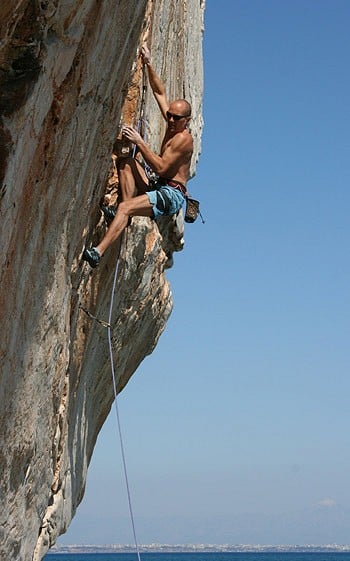
3. Take your time
Aim to make your session last for at least two hours. I'm always amazed by busy professionals who have climbing training sessions that last as little as half an hour. It takes far longer to warm-up than we realise – aim to spend the first forty-five minutes of your climbing session warming up gradually, taking plenty of rest. Most climbing walls have a large clock on the wall somewhere, so use it. If you start your session at, say 6.15, tell yourself that you're not going to start cranking until at least a quarter to seven.
If you are too impatient to have a stretching session before you start (guilty m'lud) then integrate it with your warm-up, so you do some easy climbing, then some stretching, then some climbing, then stretching, and so on. Later in your session, remember to take good rest between routes, or boulder problems (unless of course you're using bouldering to work power-endurance, where the lack of rest is the whole point) feel for your pulse when you've completed a route or boulder problem, it will be elevated – wait until it's dropped back before getting on another.
4. Push yourself
Training works by putting a higher load onto your body than it is comfortable with, as a consequence your body will change so that it is able to deal with this new level. If you don't push yourself during your indoor training sessions, your body will quite happily maintain it's current ability. You shouldn't expect to add a grade to your personal best each time you go to the wall, but you do need to put your body under some stress, whether you are working your finger strength through steep fingery bouldering, or developing your fitness by doing all the routes at the wall under F6b. Varying what you do will help avoid reaching a 'plateau' where improvements are very small or non-existent, so, for example, after a couple of weeks' hard bouldering, you may find your improvements have slowed, so take a different approach by climbing easier problems in circuits with little or no rest – working your power-endurance.
5. Use the wall as a tool
The title of this article is how to use a climbing wall to improve your leading outside. This approach requires a climbing wall to be treated as a means to an end. The lengths of routes indoors are dictated by the building the wall is housed in. Generally, indoor leading walls are a lot shorter than routes on rock, so we need to get creative to give our body's the same sort of work-out as they will get out on the rock, this usually involves making indoor routes longer. Of course, we can't extend the walls, but we can extend the time our body's spend climbing – and our body's don't know the difference.
Making indoor routes longer is actually quite easy, just run laps on the same wall, perhaps varying the route. If you have to stand around on the floor for a minute to switch from one end of the rope to the other, then that's fine – you're body won't know. If you fall, don't lower down or rest on the rope, get back on the wall and keep going – using bigger holds on a different route as necessary. In terms of how long the route need to be – think in terms of time rather than length: if you're working up to trying a trad route – like Left Wall, for example, ask yourself how long you expect to spend on it? Half an hour? Now use your climbing wall to simulate that – you will probably need to climb about ten routes indoors to give your body the same sort of workout as it would get on a long trad pitch where you have to hang around fiddling in wires and working out which way to go.

Adrian Berry has been climbing for over eighteen years, much of that full-time and he is now a professional climbing coach. He has competed internationally as a member of the British Competition Climbing Team, and sport climbed up to 8b+, and 8a onsight. In the trad climbing game, he has added many hard new routes from E7 to E10 in South Wales and the Peak District, many of which he had to develop specific training regimes in order to succeed.
Adrian is the co-author, with Steve McClure, of SportCLIMBING+ - published by Rockfax in December 2006. He is currently working on TradCLIMBING+ which is due to be published in 2007.

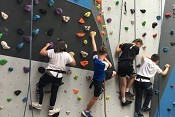
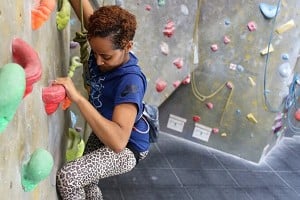
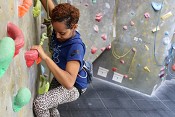
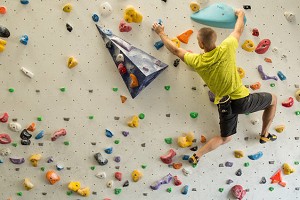
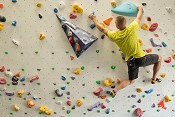






Comments